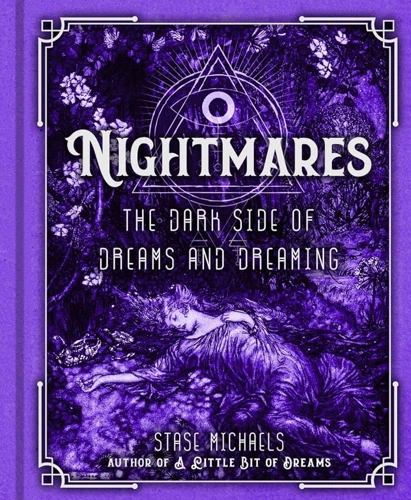What lies beneath the surface of our dreams? Are they simply random thoughts and images playing out in our subconscious, or do they hold deeper meanings and insights into our innermost desires and fears? In the captivating film “Requiem for a Dream,” director Darren Aronofsky takes us on an intense journey into the world of dreams and their interpretations. Through powerful storytelling and striking visuals, the film explores the lives of four individuals whose dreams propel them towards both the heights of euphoria and the depths of despair. In this article, we will delve into the symbolism and allegory present in “Requiem for a Dream” and unravel the profound messages hidden within. Join us as we dissect the dreams of these characters and explore the consequences of their relentless pursuit of what they most desire.
The Significance of Dreams

The significance of dreams lies in their ability to provide insight into our subconscious minds and tap into the depths of our emotions and desires. Dreams often serve as a reflection of our waking lives, allowing us to explore unresolved conflicts, hidden fears, and unfulfilled wishes. They can reveal aspects of ourselves that we may not be conscious of or may try to suppress. Dreams can be sources of inspiration, providing us with creative ideas or solutions to problems. They can also serve as warnings or premonitions, offering glimpses into future events or potential outcomes. Exploring the significance of dreams can lead to a better understanding of ourselves and our inner motivations, helping us navigate our waking lives with greater self-awareness and insight.
Interpreting Requiem for a Dream

“Requiem for a Dream” is a gripping and thought-provoking film that offers viewers a unique opportunity to delve into the interpretation of dreams. Each character in the film has their own distinct dreams and aspirations, which serve as windows into their deepest desires and motivations. Through intense cinematography, haunting visuals, and compelling performances, director Darren Aronofsky invites us to explore the layers of symbolism and allegory present within the dreams depicted on screen. From Sara’s dream of fame and recognition to Harry’s pursuit of financial success, Marion’s quest for love and fulfillment, and Tyrone’s desire to escape poverty, we are presented with a tapestry of human hopes and fears. By analyzing the dreams of these characters, we can unlock hidden meanings, understand their desires and flaws on a deeper level, and gain insights into the consequences of chasing unrealistic dreams. “Requiem for a Dream” is a cinematic masterpiece that allows us to reflect on our own dreams and the powerful forces that drive us to pursue them.
Sara’s Dream of Fame and Recognition
Sara’s dream of fame and recognition in “Requiem for a Dream” represents her longing for validation and a sense of worth. Through her intense desire to be on a television game show, she seeks external validation and believes that achieving fame will bring her happiness and a sense of purpose. However, as we follow Sara’s journey, we witness the harrowing consequences of her pursuit. Her obsession with the idea of appearing on the show leads her down a destructive path of addiction and delusion. Sara’s dream reflects the dangers of placing too much importance on external validation and the illusion that fame alone can bring happiness and fulfillment. It serves as a cautionary tale, highlighting the importance of finding validation and fulfillment from within ourselves rather than relying on others or external achievements.
Harry’s Dream of Financial Success
In “Requiem for a Dream,” Harry’s dream of financial success drives him to delve into the world of drug trafficking. His relentless pursuit of wealth and prosperity blinds him to the consequences of his actions and the destruction it brings upon his life and relationships. Harry’s dream represents the allure of material possessions and the belief that financial success will bring happiness and fulfillment. However, as the story unfolds, we witness the tragic downfall of Harry, highlighting the dangers of pursuing wealth at any cost. This storyline serves as a cautionary tale, reminding us of the importance of finding balance and prioritizing what truly matters in life, rather than being consumed by the pursuit of financial success. Marion’s dream in “Requiem for a Dream” revolves around finding love and fulfillment. As an aspiring artist and performer, she yearns for validation and affection. She dreams of being adored and admired, and believes that finding true love will bring her the happiness and contentment she desires. However, her pursuit of this dream becomes entangled with the lure of drugs and the toxic relationship she shares with Harry. Marion’s dream of love and fulfillment ultimately becomes a battle against her own inner demons and the destructive paths she willingly treads. Her story serves as a cautionary tale about the dangers of sacrificing self-worth and succumbing to addiction in the pursuit of our dreams. Tyrone’s dream of escaping poverty is a central theme in “Requiem for a Dream.” Throughout the film, we witness his relentless pursuit of financial success in hopes of breaking free from the cycle of poverty that has plagued his life. Tyrone’s dream represents the universal desire for upward mobility and a better life. It symbolizes the hope for a brighter future, free from the constraints of financial struggle. Tyrone’s determination and resilience in the face of adversity make him a compelling character, highlighting the lengths people are willing to go to achieve their dreams. However, as the story unfolds, we see the dark consequences of this dream as it becomes entangled with addiction and spirals into a nightmare. Tyrone’s story serves as a cautionary tale, reminding us of the dangers of sacrificing one’s well-being and values in the pursuit of material success. It prompts us to question the true cost of our dreams and the measures we are willing to take to achieve them. In “Requiem for a Dream,” the red dress symbolizes desire and temptation. It represents the characters’ longing for something beyond their reach and the allure of the unknown. The dress appears throughout the film, tempting the characters with the promise of fulfillment and happiness. For Sara, the dress embodies her dream of fame and recognition, drawing her into a world of illusions and false hopes. Harry is enticed by the dress’s seductive allure, pushing him further into his pursuit of financial success at any cost. Marion, too, is captivated by the dress, as it symbolizes her quest for love and fulfillment. The red dress serves as a constant reminder of the characters’ deepest desires and the destructive power of indulging in unchecked fantasies. It represents the dangerous line between dreams and reality, and the consequences that can arise when one becomes consumed by their desires. The refrigerator in “Requiem for a Dream” serves as a powerful symbol of addiction and control. Throughout the film, it becomes increasingly clear that the refrigerator represents the characters’ cravings and compulsions, particularly their dependence on drugs. It represents the allure and temptation of substances that provide temporary relief and escape from their harsh realities. The refrigerator becomes a constant presence, always within reach, symbolizing the characters’ inability to resist their addictions. Its contents, often shown as tantalizingly enticing, reinforce the idea of the characters being controlled by their desires. The refrigerator can be seen as a metaphor for the cycle of addiction, as the characters repeatedly succumb to its pull, leading them further down a destructive path. It highlights the theme of how addiction can consume one’s life, leaving them trapped and powerless. It serves as a haunting reminder of the characters’ inability to break free from their self-destructive patterns. In “Requiem for a Dream,” the subway serves as a powerful symbol of desperation and isolation. The characters find themselves trapped in the cold, dimly lit underground tunnels, symbolizing their entrapment in their own struggles and addictions. The subway represents a bleak and lonely path, with each character feeling isolated in their pursuit of their dreams. Each subway ride becomes a metaphorical journey through their darkest moments, as they become increasingly disconnected from the world around them. The subway scenes in the film highlight the characters’ desperation as they descend further into their own personal hells, mirroring the downward spiral of their lives. The subway, with its dark and desolate atmosphere, reinforces the theme of isolation and the devastating consequences of unchecked dreams and addictions. Addiction is a recurring theme in “Requiem for a Dream,” illustrating how a dream can quickly turn into a nightmare. The characters in the film become consumed by their addictions, whether it’s Sara’s addiction to diet pills, Harry’s dependence on drugs, Marion’s reliance on emotional validation through her relationship, or Tyrone’s desperation to escape poverty through drug dealing. Their dreams of fulfillment and satisfaction gradually transform into an all-consuming obsession, leading to a downward spiral of self-destruction. Addiction in the film serves as a cautionary tale, highlighting the destructive power of unchecked desires and the devastating consequences that can arise when dreams are overshadowed by addiction. The characters’ struggle with addiction serves as a stark reminder that dreams, if not tempered by reality and self-awareness, can lead to tragic outcomes. In “Requiem for a Dream,” the theme of loss of identity and self-destruction is powerfully portrayed. The characters’ relentless pursuit of their dreams leads them down a dark path where they lose sight of who they truly are. They become consumed by their desires and succumb to addiction, sacrificing their physical and mental well-being. Sara, Harry, Marion, and Tyrone all fall victim to the destructive consequences of their dreams, resulting in a loss of self and a descent into despair. Their dreams become their downfall, breaking them apart from the inside out and leaving them shattered and devoid of their former identities. This portrayal serves as a stark reminder of the dangers of fixating on unrealistic dreams and the toll it can take on one’s sense of self and overall well-being. The consequences of chasing unrealistic dreams can be devastating, as portrayed in “Requiem for a Dream.” When individuals become consumed by their desires and pursue unattainable goals, they often find themselves trapped in a cycle of disappointment, desperation, and self-destruction. In the film, we witness the characters’ dreams morph into obsessions that lead them down a path of addiction, loss of identity, and shattered relationships. Sara’s pursuit of fame and recognition drives her to extreme measures that ultimately result in her mental and physical deterioration. Harry’s relentless quest for financial success leads him to engage in criminal activities, causing irreversible damage to his relationships and personal well-being. Marion’s dream of love and fulfillment leads her to fall into the dark abyss of drug addiction, sacrificing her own self-worth in the process. Tyrone’s dream of escaping poverty becomes a never-ending downward spiral as he gets entangled in the dangerous world of drugs and crime. These examples highlight the harsh reality that chasing unrealistic dreams can have dire consequences, leaving individuals in a state of despair and disillusionment. It serves as a cautionary tale, urging us to balance our aspirations with a healthy dose of realism and self-awareness. Dreams can be powerful motivators, but it is essential to distinguish between achievable goals and fantasies that may lead us astray. Dreams and spirituality have long been intertwined, with many spiritual beliefs placing significance on the messages and symbolism found in dreams. In various religious and mystical traditions, dreams are seen as a means of communication from a higher power or the divine realm. They are viewed as a channel through which we can receive guidance, visions, and revelations. Spiritual practitioners often engage in dream interpretation to gain insights into their spiritual journeys or seek answers to existential questions. Dreams can also be seen as portals to different dimensions or alternate realities, allowing individuals to connect with their higher selves or access collective unconsciousness. By exploring dreams through the lens of spirituality, individuals can deepen their understanding of their spiritual paths, gain wisdom, and foster a deeper connection with the divine. In conclusion, “Requiem for a Dream” serves as a thought-provoking exploration of the significance and complexities of dreams. The film delves deep into the hopes and aspirations of its characters, revealing the allure and dangers of pursuing our dreams with unwavering determination. Through symbolism and allegory, it highlights the dual nature of dreams, showcasing how they can both uplift and destroy us. From Sara’s dream of fame to Harry’s desire for financial success, Marion’s search for love, and Tyrone’s yearning to escape poverty, we witness the potential for dreams to shape our lives in profound ways. However, the film also shines a light on the dark side of dreams, portraying the devastating consequences that can await those who become consumed by their desires. By examining the themes and messages of “Requiem for a Dream,” we are reminded of the importance of balancing our ambitions with realistic expectations and maintaining a connection to our true identity. Dreams can be both powerful motivators and cautionary tales, urging us to tread carefully on the delicate line between aspiration and obsession. Ultimately, the film encourages us to reflect on our own dreams, their significance in our lives, and the potential paths they may lead us down. Reference: Yes, dreams can often be filled with symbolism. Symbols in dreams can represent various aspects of our lives, such as emotions, desires, or fears. Interpreting these symbols can provide valuable insights into our subconscious. Dreams can act as a window into our deepest desires, fears, and unresolved conflicts. By analyzing our dreams, we can gain a deeper understanding of ourselves, our motivations, and the underlying emotions that drive our actions. While some symbols can have universal meanings, dream symbolism often depends on personal experiences and cultural backgrounds. What a symbol represents to one person may differ from its meaning for someone else. While some individuals claim to have experienced prophetic dreams, the scientific community remains skeptical. Dreams are more commonly seen as reflections of our thoughts, emotions, and experiences, rather than predictions of the future. Recurring dreams can indicate unresolved issues, fears, or repeated patterns in our lives that we need to address. These dreams persist until we acknowledge and work through the underlying emotions or conflicts they represent. Although nightmares can be distressing, they often serve as a wake-up call or a reflection of deeper fears or unresolved trauma. By facing and understanding our nightmares, we can confront and overcome our fears, leading to personal growth. Yes, lucid dreams are real and occur when the dreamer becomes aware that they are dreaming. This awareness allows the dreamer to have some level of control over the dream, leading to unique and immersive experiences. Yes, dream interpretation can be subjective as it relies heavily on personal experiences and emotions. Different individuals may interpret the same dream symbol differently based on their unique perspectives. Yes, it is common for dreams to be forgotten upon waking. The rapid eye movement (REM) stage of sleep, where most dreaming occurs, can cause memory fragmentation, making it challenging to remember dreams vividly. Yes, research suggests that animals, particularly mammals, do experience REM sleep, which is associated with dreaming. While we cannot know the content of their dreams, studies have shown observable dream-like behaviors in some animals during sleep.
Tyrone’s Dream of Escaping Poverty
Symbolism and Allegory

In “Requiem for a Dream,” symbolism and allegory play significant roles in conveying deeper meanings and exploring the complex themes of the film. One prominent symbol is the red dress, which represents desire and temptation. It serves as a metaphor for the characters’ yearning for something more in their lives, whether it be fame, success, love, or escape from poverty. The refrigerator, on the other hand, symbolizes addiction and control. It serves as a constant reminder of the characters’ destructive habits and their willingness to sacrifice everything for their fix. The subway symbolizes desperation and isolation, reflecting the characters’ sense of being trapped and disconnected from the world around them. Through these symbols and allegorical elements, “Requiem for a Dream” provides a multi-layered exploration of the human condition, inviting viewers to contemplate the universal themes of desire, addiction, and the pursuit of dreams.The Red Dress: Desire and Temptation
The Refrigerator: Addiction and Control
The Subway: Desperation and Isolation
The Dark Side of Dreams

As enticing as dreams may be, they also possess a dark side that can turn them into nightmares. In “Requiem for a Dream,” this dark side is vividly portrayed through the characters’ experiences. Addiction, one of the central themes of the film, exemplifies the destructive nature of dreams gone awry. Sara, Harry, Marion, and Tyrone all succumb to the allure of their dreams, only to be consumed by the devastating consequences of their choices. Addiction gradually erodes their identities and leads to a spiral of self-destruction. The film highlights the profound impact that chasing unrealistic dreams can have on individuals and serves as a cautionary tale about the dangers of becoming entrapped by one’s desires. It prompts us to reflect on the importance of finding a balance between pursuing our dreams and maintaining our well-being, reminding us to approach our aspirations with caution and self-awareness.Addiction: A Dream Turned Nightmare
Loss of Identity and Self-Destruction
The Consequences of Chasing Unrealistic Dreams
Dreams and Spirituality
Conclusion
– “Requiem for a Dream” (2000): [IMDb page](https://www.imdb.com/title/tt0180093/)Frequently Asked Questions
1. Can dreams have symbolic meanings?
2. How can dreams help us understand ourselves better?
3. Are there universal dream symbols?
4. Can dreams predict the future?
5. What is the purpose of recurring dreams?
6. Can nightmares have a positive impact?
7. Are lucid dreams real?
8. Can dream interpretation be subjective?
9. Is it possible to forget dreams?
10. Do animals dream?
References







